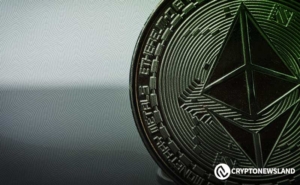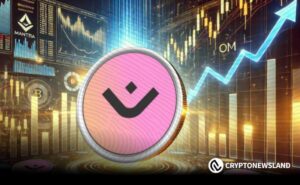Interpreting Vana, the new dark horse in the AI field: What is its innovation? (with interactive tutorial)
A16z partners recently released a list of AI projects worth paying attention to, and Vana is the only Web3 project mentioned.
Original title: "A new dark horse in the AI track, going against Google and Facebook?"
Original author: Viee, Biteye
The "AI craze" in encryption has not faded, and the Nobel Prize has also entered the "AI era". This year's Nobel Prize in Physics and Chemistry are both related to artificial intelligence.
A few days ago, a16z partner @venturetwins released a list of AI projects worth paying attention to, among which @withvana was mentioned. It is the only Web3 project mentioned and deserves our special attention.
AI is getting more and more popular, what is Vana?What is the innovation? Let's take a look today.
01What does Vana want to do?
The answer is a platform that tokenizes and trades user data. Users can use the data generated on platforms such as Google and Reddit to build a user-managed data market, thereby providing high-quality data for AI training and bringing benefits.
This narrative has also been mentioned in other AI projects. In summary, it is to return data to users and oppose the monopoly of large Internet companies.
But if you look at it carefully, Vana still has quite different highlights:
1. Data trading: Users can put their data into the data liquidity pool (DLP), and each submission can get token rewards, similar to data mining.
2. Data DAO: Vana has established a data DAO, where users can not only upload and manage their own data, but also participate in decision-making and governance through this organization. This structure gives users greater voice and control on the platform, rather than just being data providers.
In other words, the core of Vana is its "data liquidity network", which allows users' data to be tokenized and traded like financial assets.
02Vana's core technical concept
"Building the best artificial intelligence model" is Vana's foothold, and that is why it created the Data Liquidity Pool (DLP) to collect the highest quality data, which is crucial to the project.
Vana implements the "Data Liquidity Network" through two mechanisms:Proof-of-contribution, which verifies the value of private data in a privacy-preserving way. And non-custodial data, which ensures that data is only used for approved operations.
Like a modern "data market", participating in the data liquidity pool on Vana is like an early Ethereum miner. There are three main core technical concepts:
1. Data Liquidity Layer (DLP)
This layer is responsible for centralizing user-submitted data into the Data Liquidity Pool (DLP). DLP is a smart contract that allows users to contribute, verify, and record data. It's like a "data pool" where users put their own data in to form a big pool of water. The water (data) here is more valuable than individual drops of water (personal data) because it can be used to train artificial intelligence. Each data pool has its own rules, such as how to verify and use this data. After contributing data, users can receive rewards and management rights.
2. Data Portability Layer
This layer is a collaborative space that enables data contributors and developers to build applications using data in DLP. It provides infrastructure for training user-owned models and developing AI applications. Through this layer, online communities and developers can create economic value from data, and data contributors can benefit from AI generated by their data.
3. Connectivity Group
The connectivity group is a decentralized ledger that records data transactions in the Vana ecosystem in real time. It ensures that each transaction is secure and valid, and allows outsiders to see these transactions. This ledger is compatible with other blockchain networks, allowing data to flow freely between different platforms.
Vana is based on these two layers and connectivity groups to provide users with a secure and decentralized data management platform.
03 Data mining, how to achieve it?
As mentioned earlier, the data liquidity network can generate income from users' personal data. The specific implementation path is as follows:
First, it involves data assetization. Vana converts users' data into tradable assets through data liquidity pools (DLP). Each DLP is a smart contract that specializes in aggregating specific types of data. Users can receive corresponding token rewards after submitting data. This method makes the user's data not just static information, but a digital asset that can be circulated in the market.
Secondly, in order to ensure the quality of submitted data, a set of standards is needed to verify the authenticity and quality of the data, which involves the Proof of Contribution mechanism. Only high-quality data can be rewarded. This process will be jointly evaluated by multiple validators to ensure fair scoring and avoid bias.
In addition, the data of non-custodial data storage users will not be directly uploaded to the chain, but will be saved in a location selected by the user, such as Google Drive. Only the creator and his authorized account can access this data. This is very important, and users always have control over their own data.
Finally, to string all the links together, an incentive mechanism is indispensable. Therefore, Vana allows each DLP to issue its own tokens to encourage users to actively participate in data contribution. The top 16 DLPs will receive additional Vana token rewards, which further stimulates the formation and competition of high-quality data pools.
04 How to interact now?
Telegram applet, simple clicks to simulate mining
Vana has launched an interactive applet activity on Telegram (https://t.me/VanaDataHeroBot), and points are earned by completing tasks. The specific operations are as follows:
1. Click on the sphere in the middle within the specified time. The more times you click, the more points you will get
2. Social tasks, test network tasks, and inviting friends
From the perspective of the project's layout, "Telegram mining" as a tool for going out of the circle is only a small part of the interaction. Ecological project interaction, test network node interaction, etc. are the future focus. At present, the official website shows that ecological partners include Reddit Data Dao, Flirtual, Kleo, etc., and there are also some AI-related projects. The gameplay is still worth looking forward to.
Join DLP to contribute data
The current DLP rankings are as shown below. As an ordinary user, you can choose to contribute data to DLP to earn points. Take the number one DAO, Reddit Data Dao, as an example.
After registering a Reddit account, go to https://www.rdatadao.org/home and fill in your username. After verification, you will receive points for leaving messages or posts on Reddit, which are linked to future token airdrops. There is no cost, so you can try it when you have time.
05 Summary
Anyway, AI is still a key track that cannot be ignored in this cycle.
By combining AI with blockchain, the intelligence of decentralized applications can be improved to meet data privacy and security needs, while providing users with returns. Sexy narratives are not short of capital or audiences.
Hot money poured in in the first half of the race, and the second half will depend on which project can land first.
Disclaimer: The content of this article solely reflects the author's opinion and does not represent the platform in any capacity. This article is not intended to serve as a reference for making investment decisions.
You may also like
Ethereum’s Symmetrical Triangle: Key Resistance and Support Levels to Watch

XRP Bulls Eyeing $2.50 Resistance: Is a Breakout Coming Soon?

Crypto Shockwave: OM Token Crashes Nearly 90%, Triggers Trust Crisis:Deep Flaws in Token Governance?

The yield on the five-year U.S. Treasury note fell 15 basis points to 4.01%.
